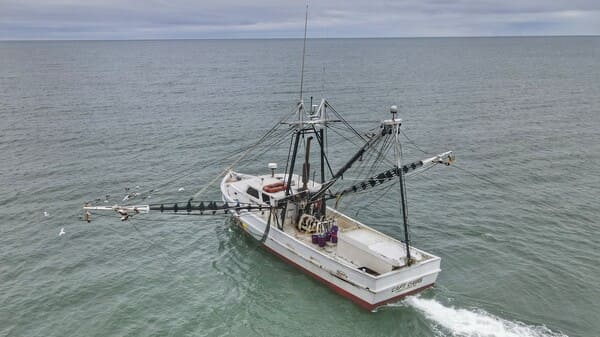What is the fishing ground
Fishing ground refers to the waters with fishing value where fish or other aquatic economic animals pass through or swim intensively.
With the change of environmental conditions such as spawning, breeding, feeding and wintering, they gather in groups and swim through or stay in a certain water range in a certain season to form a relatively concentrated place with fishing value in fishery production.
Hokkaido fishing ground
Introduction
It is located in the eastern part of Asia, near the Japanese island of Hokkaido, is the confluence of the Japanese warm current and the Kuril Cold Current.
Due to the difference in the density of sea water, the cold water with high density sinks while the warm water with low density rises, causing the sea water to stir vertically, bringing the organic matter deposited on the bottom to the surface and providing abundant food for fish.

In addition, the convergence of cold and warm currents can produce a “water barrier”, which hinders the mobility of non-migratory fish to a certain extent.
And because of the scientific and technological development of the fishing industry and the continuous development of aquaculture fisheries, it has become a major fishing ground in the world.
Types of fishery
The main fishery species include salmon, pollock, Pacific herring, autumn knife-fish and Far Eastern sardines.
Salmon
Salmon is a popular food, and the most common salmon in our markets, Atlantic salmon (99%), is farmed, while more than 80% of Pacific salmon is wild-caught.

Salmon is mainly found in the northern Pacific Ocean and northern parts of Europe, Asia and the Americas.
Salmon mainly live in the northern Hemisphere of the ocean, to the sea of Okhotsk, Bering Sea and other seas most, wait until mature, and swim upstream, back to the river where they were born to spawn.
The most suitable fishing net to catch salmon is purse seine, gill net and drift net.
Pollack
Pollack is also known as pollock. The body of pollock is long, rear side flat; It is up to 900 mm long and has small round scales on its head.
It is distributed in the Chukchi Sea from the southern end of the Sea of Japan to the northern side of the Bering Strait and along the coast of Canada, and a few can reach the west side of the Korean Peninsula along the cold current, and it is one of the important economic fish in the Sea of Japan.
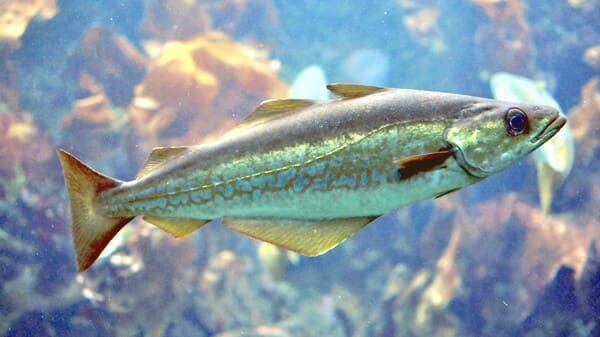
It often lives in the bottom of the deep sea and is dominated by planktic crustaceans such as copepods, amphipods, krill and small fish.
The most suitable fishing net to catch pollack is trawling net, including the midwater trawl, otter trawl and bottom trawl.
Herring
Herring is an important economic fish; The density of its shoals and the number of individuals are unparalleled, and it can be said that it is the most productive fish in the world.
Herring live in deeper waters, suitable for low temperatures, when breeding swim offshore, often cluster swimming, easy to reproduce and protect young fish, foraging and resist enemies. It comes to the surface at night to feed on copepods, pteropods and other crustaceans.
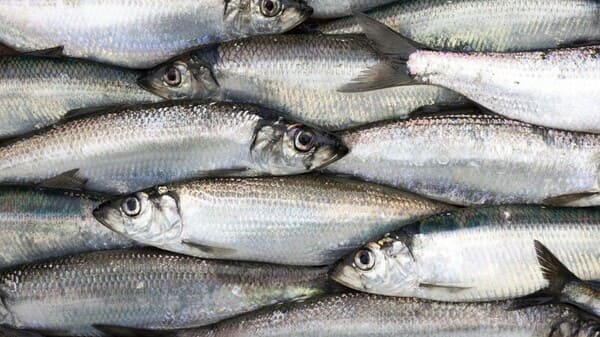
The purse seine is the most popular fishing net to catch the herring.
Pacific saury
Pacific saury is also known as mackerel pike, it is a genus of pelagic fish, living in subtropical and temperate waters of the Pacific Ocean along the coast of Asia and America, mainly distributed in the temperate waters of the northern Pacific Ocean, is a cold-water ravine fish.
It is a cold-water oceanic migratory fish, likes to cluster, often inhabits the water temperature of 15-18℃, mainly feeding on copepods, crustaceans, cephalopods and fish eggs and other food.

The gill net, set net or drift net is the popular choice to catch the Pacific saury.
Peru fishing ground
Introduction
The southeast trade winds blow from the South American continent to the Pacific Ocean, causing the surface water along the coast to move offshore, and the bottom water rises and replenishes to form an upwelling compensation current.
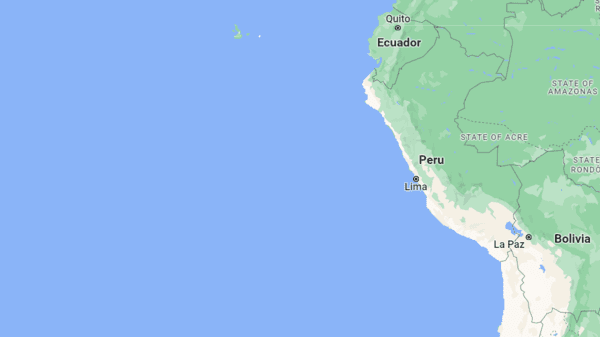
The compensation current then carries the nutrient salts from the seabed to the surface. The surface water flows northward under the action of the wind, and the water flowing away from the original sea is replenished by the deeper water, which upturns.
The sea floor is rich in nutrient salts, plankton blooms, provide sufficient food for fish and shrimp, and form a large fishing ground. Thus, the upwelling compensatory currents prevailing along the Peruvian coast form the Peruvian fishery, one of the four largest fisheries in the world.
Types of fishery
The main fish in Peruvian fisheries are cod, tuna, sardines and squid.
Cod
Cod live in cold water areas in summer and autumn, and migrate to coastal mud bottom waters in depths of 50-80 meters in winter.
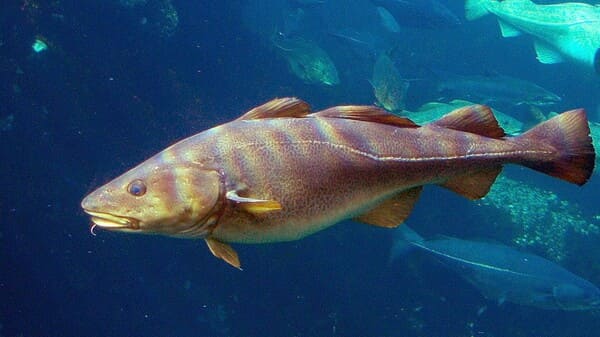
They usually form schools for long-distance migration and hunting, and are bottom cold water aggregators. Cod feed mainly on small fish, crustaceans, mollusks and so on.
The trawling net and gill net will be the most popular choice for fishermen to catch the cod in the sea.
Anchovy
Anchovy is usually 8 to 12 centimeters long and weigh 15 to 50 grams. More than 90 percent of anchovy is used to make fishmeal and fish oil.
Anchovy is a small fish that lives in the middle and upper layers of temperate oceans and has a strong phototaxis, which is more pronounced in young fish.
Anchovies are warm-water pelagic fish with a marked diurnal vertical movement.
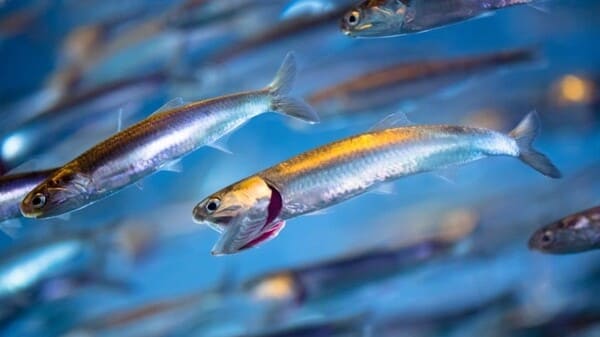
During the day, when the surface water temperature is high, it is generally perched in the middle or near the bottom, and it will move upward around dusk in the afternoon, and it will gradually dive into the early morning.
The purse seine net is the most effective fishing net to catch the anchovy.
Tuna
Tuna are highly migratory fish found in oceans around the world and are known for their sleek and streamlined bodies, which allow them to swim at remarkable speeds.
It includes bluefin tuna, yellowfin tuna, bigeye tuna and skipjack tuna. For the most part, tuna are pelagic (open ocean) fish that live in tropical and subtropical oceans.
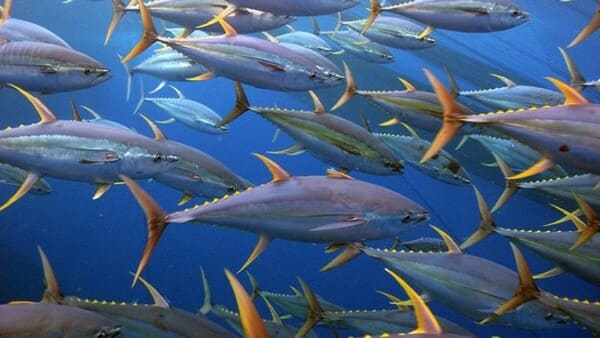
The most popular fishing net used to catch tuna in commercial fishing operations is the purse seine net. Some fishermen also choose the gill net to catch the tuna.
Sardine
Sardine is a small, slender silver fish, 15-30 cm long, 85-175 grams. Sardines are coastal warm water fish, generally not found in open seas and oceans.
Sardines have high edible value and high overall nutritional value, and are widely harvested and used in food processing. Sardines are also a globally important economic fish, and they are often an important product of pelagic fishing.

The most popular fishing net used to catch sardines is purse seine net.
North sea fishing ground
Introduction
The North Sea fishing ground is the center of the fishing ground of the Northeast Atlantic Ocean. It is formed by the convergence of the warm current of the North Atlantic Ocean and the cold sea water from the Arctic Ocean to the south.
The cold and warm currents converge here, and the fish are rich and diverse, mainly producing herring, mackerel and cod.
The North Sea fishing grounds are at the point where the warm North Atlantic Current meets the cold water flowing south from the Arctic Ocean.

The convergence of cold and warm currents creates upwelling. In the upwelling area, the seawater is continuously flowing from the lower layer to the surface, and nutrients such as decomposed organic matter in the lower layer of the seawater are also brought to the surface.
As a result, the water quality in this area is fertile, forming a high-yield fishing area in the North Sea.
Types of fishery
The average annual catch is about 3 million tons, accounting for about 5% of the world’s catch, herring and mackerel accounted for almost half of the total catch, others are cod, rice fish and flounder. It is also rich in lobsters, oysters and shellfish.
Herring
Herring in the North Sea fishing ground are a highly abundant and commercially important species of fish. The North Sea is one of the most significant herring fishing grounds in the world, and herring populations in this region support a thriving fishery industry.
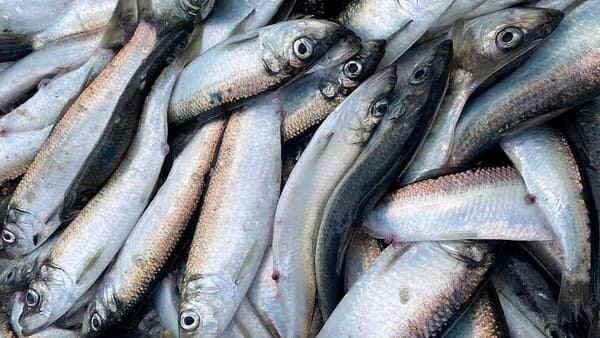
The annual catch of herring is around 1.2-1.5 million tons. Most of them are caught by purse seine.
Mackerel
Mackerel is a popular species of fish that belongs to the family Scombridae. It is widely distributed throughout the world and can be found in both temperate and tropical waters.
It is a warm water pelagic fish. Strong phototaxis at night, there are vertical movement of day and night. It feeds widely on planktonic crustaceans and young fish.
Strong swimming ability, can make long-distance migration. In spring and summer, it inhabits the middle and upper layers, and in the reproductive season, it integrates large groups to spawn offshore.

Dense shoals of mackerel swim in the water, stretching up to 32 kilometers (20 miles) long. They feed mainly on shellfish larvae, worms, fish eggs and small fish.
The most popular fishing net used to catch mackerel is the purse seine net. Purse seine nets are highly effective for targeting schooling fish like mackerel, and they are widely used in commercial fishing operations.
Newfoundland fishing ground
Introduction
The Newfoundland Fishery, located off the coast of Newfoundland, was once one of the four largest fisheries in the world, formed by the confluence of the cold Labrador Current and the Warm Gulf Stream in the waters near Newfoundland.
The exceptionally rich fishery had the reputation of “stepping on the back of the cod stock”, but after centuries of indiscriminate fishing, especially when large mechanized trawlers began operating in the 1950s and 1960s, the Newfoundland fishery gradually died out.
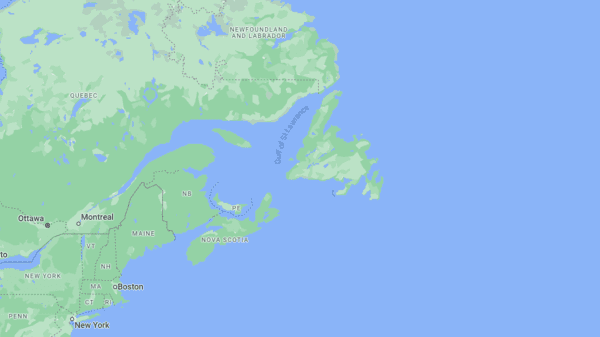
The Newfoundland fishing grounds have historically been one of the most productive and important fishing areas in the world.
Located off the eastern coast of Canada, specifically around the island of Newfoundland and the Grand Banks, these fishing grounds have supported significant commercial fishing activities for centuries.
Types of fishery
The main fish in Newfoundland fisheries used to be cod, but after nearly 100 years of overfishing, the cod ecological environment has been destroyed and it is extremely difficult to recover.
There are also salmon, bonito, hairtail, herring, sashlefish, sole, shark, yellow croaker, squid and tuna.
Cod
The cod was the main fish in Newfoundland fishing ground. But as the development of fishing techninology. These advanced fishing boats work day and night, rain or shine, regardless of whether the fish are in breeding season.
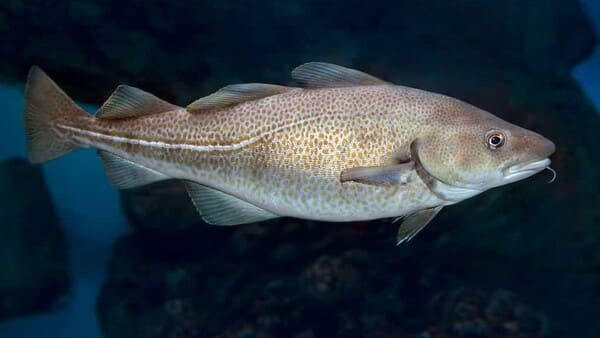
According to statistics, such large-scale fishing vessels can catch 200 tons of fish in an hour, which is twice the catch of a traditional fishing boat in the whole season of the 16th century.
In 1992, the Canadian government was forced to impose a fishing ban on Newfoundland fisheries. This caused Newfoundland’s largest industry, the fishing industry, to go bankrupt after nearly 500 years, and nearly 40,000 fishermen lost their jobs.
But 11 years after the 2003 ban, Newfoundland waters are still dead, and cod, once seemingly plentiful, is now hard to find.
Conclusion
Overfishing and Marine pollution are two major challenges to the protection of Marine resources. Uncontrolled fishing in the past has led to the extinction of more and more fishing grounds. Increased commercial activity has also brought a lot of Marine pollution, seriously affecting the traditional habits of fish.
Fortunately, more and more countries and organizations have begun to pay attention to fisheries conservation, and a variety of sustainable development policies have been implemented.
We are all in the fishing industry, so each of us has a responsibility to protect the Marine resources. Reducing overfishing, reducing Marine pollution, and not throwing away scrapped fishing nets starts with me.

